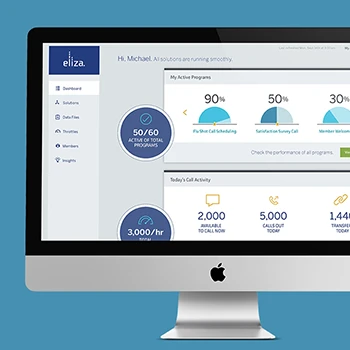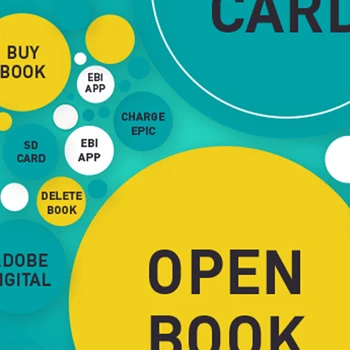What exactly is innovation strategy and why do organizations need it?
Innovation strategy creates a clear roadmap that connects your organization's capabilities with emerging market opportunities. Drawing from our Experience Thinking framework, innovation strategy addresses four critical areas: brand differentiation, content strategy, product development, and service innovation. Without strategic direction, innovation efforts become scattered experiments rather than coordinated business transformation.
Tip: Start by mapping your current innovation activities across all four Experience Thinking quadrants to identify gaps where disconnected efforts might be limiting overall impact.
How does innovation strategy differ from product strategy?
Product strategy focuses on individual products or features, while innovation strategy encompasses your entire approach to creating new value. Innovation strategy includes foresight design methodologies that anticipate future market needs, organizational change capabilities, and systematic approaches to exploring breakthrough opportunities across brand, content, product, and service experiences.
Tip: Evaluate whether your current strategy addresses organizational innovation capabilities or just individual product roadmaps.
What makes innovation strategy successful in today's market?
Successful innovation strategy combines systematic exploration with rapid experimentation. Based on our Experience Thinking approach, it requires alignment across people, business models, processes, and technology. Organizations need frameworks that balance breakthrough innovation with operational excellence while maintaining focus on end-to-end customer experiences rather than isolated touchpoints.
Tip: Focus on building innovation capabilities that scale across your organization's growth rather than just improving individual project outcomes.
How do you determine the right innovation focus for our organization?
Innovation focus emerges from understanding your strategic context, market position, and organizational capabilities. Using Experience Thinking principles, we examine how brand strategy, content assets, product portfolio, and service delivery can create competitive advantages. The process includes stakeholder analysis, competitive landscape assessment, and systematic evaluation of innovation opportunities across the complete customer lifecycle.
Tip: Map your innovation opportunities against business impact and organizational capability to identify focus areas where you can create sustainable competitive advantages.
What role does user research play in innovation strategy?
User research provides the foundation for innovation strategy by revealing unmet needs, behavioral patterns, and emerging market trends. Through longitudinal studies and participatory design methods, research uncovers insights that drive strategic direction. However, innovation strategy goes beyond user research to include organizational capability development and systematic approaches to turning insights into market reality.
Tip: Implement longitudinal research programs that track user behavior evolution over time rather than relying on snapshot studies at specific moments.
How does innovation strategy connect to business outcomes?
Innovation strategy creates clear connections between exploration activities and business results through systematic measurement and portfolio management approaches. Success metrics include both leading indicators like experimentation velocity and lagging indicators like revenue from new offerings. The strategy establishes governance frameworks that balance risk-taking with business performance.
Tip: Develop portfolio-level innovation metrics that demonstrate total value creation rather than competing for resources based on individual project calculations.
What's the relationship between innovation strategy and digital transformation?
Innovation strategy provides the strategic framework that guides digital transformation initiatives. Rather than implementing technology for its own sake, innovation strategy ensures digital capabilities align with market opportunities and customer needs. The Experience Thinking framework helps organizations understand how digital transformation impacts brand expression, content strategy, product development, and service delivery as an integrated system.
Tip: Position innovation strategy as a transformation enabler rather than just a planning exercise to influence technology decisions and organizational development.
How does the Experience Thinking framework apply to innovation strategy?
Experience Thinking provides a holistic framework that integrates brand, content, product, and service innovation into unified strategy. Unlike approaches that focus primarily on product development, Experience Thinking helps organizations create connected experiences across all customer touchpoints. This framework addresses the complete experience lifecycle from awareness through advocacy, ensuring innovation efforts create coherent value propositions.
Tip: Audit your current innovation strategy against all four Experience Thinking quadrants to identify strategic gaps where disconnected efforts might be limiting overall impact.
What's the difference between Design Thinking and Experience Thinking for innovation?
While Design Thinking focuses on problem-solving for specific challenges, Experience Thinking addresses the broader organizational context of creating connected experiences. Design Thinking often applies uniform processes, while Experience Thinking recognizes that innovation requires different approaches for brand, content, product, and service challenges. Experience Thinking also emphasizes emotional responses and long-term customer relationships rather than individual problem solutions.
Tip: Consider whether your innovation methodology addresses end-to-end experience orchestration or just individual challenge resolution.
How do you structure innovation strategy across different organizational functions?
Innovation strategy requires cross-functional frameworks that align marketing, product development, technology, and operations around shared experience objectives. The structure includes governance models, decision-making authorities, and collaboration systems that enable rapid experimentation while maintaining strategic coherence. This involves creating hybrid roles and shared accountability systems that leverage each function's strengths.
Tip: Create cross-functional success metrics and shared accountability systems rather than trying to improve collaboration through communication workshops alone.
What methods do you use for innovation strategy development?
Our approach combines strategic planning workshops, stakeholder interviews, competitive analysis, and participatory design sessions. We use Experience Thinking methods to map current state capabilities, identify innovation opportunities, and develop implementation roadmaps. Methods include journey mapping, service blueprinting, business model canvas development, and systematic experimentation frameworks that balance exploration with execution.
Tip: Invest in professional workshop facilitation and structured follow-up processes rather than assuming good meeting management skills translate to effective strategic development.
How do you validate innovation strategy before implementation?
Strategy validation requires methods that test both market assumptions and organizational capability to execute. We use prototyping approaches that go beyond interface mockups to include business model validation, stakeholder alignment assessment, and capability evaluation. Foresight design techniques help anticipate market changes and validate strategic assumptions through systematic experimentation and learning cycles.
Tip: Create validation approaches that test both user acceptance and organizational capability to execute innovation strategies rather than just market preferences.
What's your approach to innovation portfolio management?
Innovation portfolio management balances breakthrough opportunities with incremental improvements across different time horizons. We help establish allocation frameworks that distribute resources between exploration, development, and optimization activities. This includes developing prioritization criteria, success measurement systems, and governance processes that optimize overall portfolio impact while managing risk appropriately.
Tip: Allocate specific percentage of innovation resources to pure exploration rather than trying to innovate within existing optimization processes.
How do you integrate emerging technologies into innovation strategy?
Technology integration requires strategic assessment frameworks that evaluate how emerging capabilities align with customer needs and business objectives. Rather than adopting technology for its own sake, we help organizations understand how new technologies can enhance brand expression, content delivery, product capabilities, and service experiences. The approach includes experimentation frameworks and strategic planning that enables proactive rather than reactive adaptation.
Tip: Establish dedicated capacity for emerging technology experimentation rather than trying to integrate new technologies into existing project workflows.
How do you create actionable innovation roadmaps?
Innovation roadmaps connect strategic vision with specific implementation steps across multiple time horizons. Using Experience Thinking principles, roadmaps address how brand evolution, content strategy, product development, and service innovation align to create competitive advantages. The roadmaps include resource allocation, milestone definition, success criteria, and governance frameworks that enable systematic progress tracking and course correction.
Tip: Design roadmaps that prioritize capability building and strategic positioning rather than just feature development timelines.
What's your approach to innovation resource allocation?
Resource allocation requires sophisticated portfolio management that balances innovation opportunities with operational needs. We help organizations establish allocation frameworks, develop business cases for innovation investments, and create measurement systems that optimize resource deployment across the innovation pipeline. This includes developing stakeholder negotiation strategies and success measurement that demonstrates innovation value.
Tip: Develop business cases based on competitive advantage and market opportunity rather than just efficiency improvements to secure strategic-level investment.
How do you handle innovation strategy in complex organizational environments?
Complex organizations require innovation strategies that work across diverse business units, geographic regions, and cultural contexts. We develop frameworks that distinguish between universal innovation principles and local adaptation opportunities. The approach includes stakeholder alignment strategies, communication frameworks, and governance systems that enable coordinated innovation while respecting local market requirements and business contexts.
Tip: Create clear guidelines that specify which innovation elements require global consistency and which allow local adaptation rather than trying to standardize everything.
What role does organizational culture play in innovation strategy?
Culture provides the foundation that enables innovation strategy execution. We help organizations develop culture change strategies, training programs, and organizational systems that embed innovation thinking across business functions. This includes developing leadership capabilities, creating psychological safety for experimentation, and establishing values-based decision-making that supports calculated risk-taking and continuous learning.
Tip: Focus culture development on shared innovation principles and decision-making frameworks rather than trying to train everyone in specific innovation methods.
How do you address resistance to innovation initiatives?
Resistance often stems from unclear value propositions, resource concerns, and established workflows rather than opposition to innovation itself. We develop change management strategies that address specific resistance sources, demonstrate incremental value, and create safe spaces for experimentation. The approach includes coalition-building, pilot program design, and communication strategies that build organizational confidence through demonstration rather than persuasion.
Tip: Address change resistance through partnership and demonstration rather than education alone to build genuine organizational support for innovation practices.
What governance frameworks do you establish for innovation management?
Innovation governance balances creative exploration with business accountability through frameworks that provide guidance without stifling experimentation. We establish decision-making authorities, approval processes, and review systems that maintain quality standards while enabling rapid learning cycles. This includes creating governance systems that focus on outcomes and principles rather than detailed process requirements to maintain flexibility while ensuring strategic alignment.
Tip: Design governance systems that focus on outcomes and strategic alignment rather than detailed process requirements to maintain innovation flexibility.
How do you measure innovation strategy success?
Innovation measurement requires sophisticated frameworks that connect innovation activities to business outcomes through both leading and lagging indicators. We develop measurement systems that track experimentation velocity, capability development, market impact, and competitive positioning. Foresight design approaches help establish predictive metrics that anticipate business outcomes from innovation activities rather than just reporting on activity completion.
Tip: Develop measurement capabilities that predict business outcomes from innovation activities rather than just reporting on project completion and satisfaction scores.
How do you build organizational innovation capabilities?
Innovation capability development focuses on building systematic organizational systems rather than individual skills. This includes developing innovation leadership, creating scalable research operations, establishing experimentation frameworks, and building cross-functional collaboration capabilities. Using the Experience Thinking framework, we help organizations develop capabilities that enable sustained competitive advantage across brand, content, product, and service innovation.
Tip: Focus on building innovation capabilities that can scale across organizational growth rather than just improving current performance.
What's your approach to innovation leadership development?
Innovation leadership requires skills that go beyond traditional management to include strategic thinking, experimentation management, and cross-functional collaboration. We develop leadership capabilities through strategic communication training, stakeholder engagement strategies, and systems thinking that embeds innovation into organizational decision-making. This includes executive education and change management approaches that create innovation advocates across the organization.
Tip: Focus on creating innovation advocates and capabilities within other functions rather than trying to centralize all innovation decisions within one department.
How do you establish innovation labs and experimentation capabilities?
Innovation labs require careful design that balances exploration freedom with business relevance. We help organizations create lab structures, establish experimentation frameworks, and develop processes that enable rapid learning while maintaining strategic focus. Foresight design methodologies help labs explore emerging opportunities and test future scenarios. The approach includes governance systems that connect lab insights to business strategy and implementation capabilities.
Tip: Establish innovation labs with dedicated exploration capacity rather than trying to innovate within existing operational constraints and timelines.
What's your approach to building innovation partnerships?
Innovation partnerships require sophisticated strategies that leverage external expertise while building internal capabilities. We help organizations develop partnership frameworks, evaluation criteria, and collaboration models that access specialized innovation capabilities without creating dependencies. This includes developing hybrid engagement models that combine internal and external resources effectively while maintaining strategic control and organizational learning.
Tip: Structure innovation partnerships to build internal capabilities alongside delivering outcomes rather than just outsourcing specific innovation tasks.
How do you develop innovation research capabilities?
Innovation research requires advanced methodologies that go beyond traditional market research to include trend analysis, weak signal detection, and participatory design approaches. We help organizations establish research operations that can support both systematic measurement and custom investigation. This includes developing longitudinal research programs, ethnographic capabilities, and advanced analytics that inform strategic innovation decisions rather than just validating existing assumptions.
Tip: Build research operations that can support both standardized measurement and exploratory investigation rather than choosing between scalability and depth.
What role does AI play in innovation strategy consulting?
AI enhances innovation strategy through pattern recognition, trend analysis, and insight synthesis rather than replacing strategic thinking. We help organizations identify appropriate AI applications for market research, competitive analysis, and opportunity identification while maintaining human oversight for strategic decision-making. AI tools accelerate analysis and hypothesis generation, but innovation strategy requires human judgment for complex market and organizational considerations.
Tip: Use AI for pattern identification and initial analysis but maintain human oversight for strategic innovation decisions and market interpretation.
How do you build cross-functional innovation capabilities?
Cross-functional innovation requires frameworks that align different departmental perspectives around shared innovation objectives. We establish shared language, aligned success metrics, and collaborative workflows that leverage each function's innovation contributions. This includes developing hybrid roles, cross-functional rituals, and shared accountability systems that create genuine partnership rather than handoff relationships between marketing, product, technology, and operations functions.
Tip: Create shared innovation success metrics across functions rather than trying to improve collaboration through communication training alone.
How do you identify breakthrough innovation opportunities?
Breakthrough opportunities emerge from systematic analysis of market trends, unmet customer needs, and technological possibilities. Using Experience Thinking methodology, we examine opportunities across brand positioning, content strategies, product capabilities, and service models that can create new value categories. The process includes trend analysis, weak signal detection, and scenario planning that helps organizations identify opportunities before they become obvious to competitors.
Tip: Focus opportunity identification on market category creation and business model innovation rather than just incremental improvements to existing offerings.
What's your approach to competitive innovation analysis?
Competitive analysis examines innovation strategies and capabilities rather than just current offerings. We analyze competitor innovation portfolios, experimentation approaches, and strategic positioning to identify market gaps and competitive advantages. The analysis includes innovation velocity assessment, capability evaluation, and strategic positioning analysis that helps organizations understand the competitive innovation landscape and identify differentiation opportunities.
Tip: Focus competitive analysis on innovation strategy and capability development rather than just cataloging current features and offerings.
How do you assess market readiness for innovation initiatives?
Market readiness assessment combines customer behavior analysis, technology adoption patterns, and ecosystem development evaluation. We use longitudinal research methods and trend analysis to understand market evolution timing and readiness indicators. Foresight design techniques help anticipate market changes and identify optimal timing for innovation introduction. The assessment includes both customer readiness and market infrastructure capability evaluation.
Tip: Evaluate market readiness through behavioral patterns and ecosystem development rather than just customer survey responses about future preferences.
What role does trend analysis play in innovation strategy?
Trend analysis provides the foundation for understanding market evolution and identifying emerging opportunities before they become mainstream. We analyze technological trends, behavioral shifts, regulatory changes, and cultural evolution that impact innovation potential. The analysis connects trend insights to specific innovation opportunities across brand, content, product, and service domains, helping organizations position for future market conditions rather than just current needs.
Tip: Create ongoing trend monitoring systems that track early indicators rather than just periodic analysis of established trends.
How do you help organizations enter new markets through innovation?
Market entry through innovation requires understanding local customer needs, competitive dynamics, and regulatory environments while leveraging core organizational capabilities. We develop market entry strategies that adapt innovation offerings to local contexts while maintaining strategic coherence. The approach includes market research, competitive positioning, partnership strategies, and go-to-market planning that enables successful innovation introduction in new markets.
Tip: Focus market entry strategy on adapting core innovation capabilities to local contexts rather than trying to replicate exact solutions across different markets.
What's your approach to innovation ecosystem development?
Innovation ecosystems require strategic development that connects internal capabilities with external innovation resources including startups, research institutions, and technology providers. We help organizations develop ecosystem strategies, partnership frameworks, and collaboration models that accelerate innovation while maintaining strategic control. This includes developing innovation network management capabilities and systematic approaches to external innovation integration.
Tip: Build innovation ecosystems that combine complementary capabilities rather than trying to develop all innovation expertise internally.
How do you approach innovation for regulated industries?
Regulated industries require innovation strategies that balance creative exploration with compliance requirements and risk management. We develop frameworks that identify innovation opportunities within regulatory constraints while building capabilities to influence regulatory evolution. The approach includes stakeholder engagement strategies, compliance integration, and systematic approaches to regulatory innovation that enable breakthrough thinking within appropriate boundaries. Foresight design helps anticipate regulatory changes that create new innovation possibilities.
Tip: Focus regulated industry innovation on creating value within existing constraints while building capabilities to influence future regulatory evolution.
How does innovation strategy connect brand and product development?
Brand and product innovation must align to create coherent customer experiences that reinforce strategic positioning. Using Experience Thinking principles, we ensure brand promise connects purposefully with product capabilities, creating authentic value propositions rather than disconnected messaging. The integration includes developing brand expression guidelines for product innovation and ensuring product development reinforces brand positioning through actual functionality and user experience.
Tip: Align brand innovation and product development through shared experience principles rather than treating them as separate strategic initiatives.
What's your approach to content strategy innovation?
Content innovation goes beyond messaging to include new formats, delivery mechanisms, and value creation approaches that enhance the overall experience ecosystem. We develop content strategies that support innovation objectives through educational content, community building, and value-added information services. Content innovation includes developing new content business models, interactive formats, and systematic approaches to content that drives innovation adoption and customer engagement.
Tip: Develop content innovation strategies that create new value streams rather than just supporting existing product promotion.
How do you integrate service innovation with product development?
Service and product innovation must work together to create end-to-end experiences that solve customer problems more effectively than individual offerings. We develop integration strategies that connect product capabilities with service experiences, creating hybrid value propositions that are difficult for competitors to replicate. This includes service blueprint development, journey orchestration, and systematic approaches to product-service integration that enhance overall customer value.
Tip: Design service and product innovation as integrated systems rather than separate offerings that happen to work together.
What's your approach to omnichannel innovation strategy?
Omnichannel innovation requires coordinated strategies across all customer touchpoints that create seamless experiences rather than optimized individual channels. Using Experience Thinking methodology, we develop channel integration strategies that maintain consistent innovation value while adapting to channel-specific requirements. The approach includes cross-channel journey design, consistent innovation messaging, and systematic approaches to channel-specific innovation adaptation.
Tip: Focus omnichannel innovation on experience consistency and value coherence rather than trying to achieve identical offerings across all channels.
How do you approach innovation for different customer lifecycle stages?
Innovation strategy must address the complete customer lifecycle from awareness through advocacy, with different innovation priorities for each stage. We develop lifecycle innovation strategies that recognize customers evolve from initial prospects to users and ultimately loyal clients, with different innovation needs at each stage. This includes developing stage-specific innovation priorities and systematic approaches to lifecycle innovation that optimize overall customer value and business outcomes.
Tip: Map innovation opportunities across the complete customer lifecycle rather than focusing only on acquisition or retention innovations.
What role does employee experience play in innovation strategy?
Employee experience innovation enables customer experience innovation by ensuring internal capabilities align with external objectives. We develop employee experience strategies that support innovation culture, provide necessary tools and training, and create organizational systems that enable innovation execution. This includes internal service design, change management, and systematic approaches to employee engagement that supports external innovation initiatives through authentic internal transformation.
Tip: Design employee experience innovations that authentically support customer experience objectives rather than treating them as separate initiatives.
How do you ensure innovation strategy creates connected experiences?
Connected experiences result from systematic integration across brand, content, product, and service touchpoints that create coherent value propositions throughout the customer journey. We use Experience Thinking frameworks to identify connection points, develop integration strategies, and establish governance systems that maintain experience coherence. Foresight design approaches help anticipate how innovation changes will impact experience connections and overall customer value.
Tip: Audit experience connections across all innovation initiatives to ensure individual improvements strengthen rather than fragment overall customer value.
How do you measure the business impact of innovation strategy?
Innovation impact measurement requires frameworks that connect innovation activities to business outcomes through both quantitative metrics and qualitative assessments. We develop measurement systems that track revenue from new offerings, market share changes, competitive positioning improvements, and customer satisfaction increases attributable to innovation initiatives. The measurement approach includes both leading indicators of innovation health and lagging indicators of business impact.
Tip: Establish measurement systems that connect innovation activities to business outcomes rather than just tracking innovation activity levels.
What organizational changes result from successful innovation strategy?
Successful innovation strategy creates systematic organizational changes including enhanced cross-functional collaboration, improved decision-making speed, increased market responsiveness, and stronger competitive positioning. Organizations develop innovation culture, systematic experimentation capabilities, and strategic planning systems that enable continuous adaptation to market changes. The transformation includes both structural changes and capability development that sustains innovation advantage over time.
Tip: Focus organizational change on building systematic innovation capabilities rather than just implementing individual innovation projects.
How do you ensure innovation strategy creates lasting competitive advantage?
Lasting competitive advantage requires innovation strategies that build organizational capabilities rather than just individual innovations that competitors can copy. We help organizations develop innovation systems, unique insight sources, and strategic positioning that creates sustainable differentiation. The approach includes developing innovation culture, systematic learning capabilities, and strategic assets that enable continuous innovation advantage rather than one-time market leadership.
Tip: Build innovation competitive advantage through systematic capabilities and strategic positioning rather than relying on individual innovation offerings alone.
What's your approach to scaling innovation strategy across large organizations?
Innovation scaling requires frameworks that maintain strategic coherence while enabling local adaptation across diverse business contexts. We develop scaling strategies that distinguish between universal innovation principles and local implementation flexibility. This includes developing governance systems, communication frameworks, and capability development programs that enable coordinated innovation while respecting local market requirements and organizational constraints.
Tip: Create innovation scaling frameworks that maintain strategic alignment while enabling appropriate local adaptation rather than trying to replicate identical approaches everywhere.
How do you help organizations maintain innovation momentum?
Innovation momentum requires systematic approaches to continuous improvement, regular strategy refresh, and organizational learning that prevents innovation initiatives from losing energy over time. We establish governance systems, measurement frameworks, and communication strategies that maintain innovation focus and energy. This includes developing celebration systems, success communication, and continuous learning approaches that sustain innovation enthusiasm and business support over time.
Tip: Create systematic approaches to innovation momentum maintenance rather than relying on initial enthusiasm to sustain long-term innovation efforts.
What future trends are shaping innovation strategy approaches?
Innovation strategy is evolving toward more systematic, data-informed, and ecosystem-oriented approaches that leverage emerging technologies while maintaining focus on human experience. Trends include increased AI integration for pattern recognition, greater emphasis on sustainable innovation, and more sophisticated approaches to ecosystem innovation. Foresight design methodologies are becoming essential for anticipating market changes and developing adaptive innovation strategies that maintain relevance through technological and social evolution.
Tip: Develop innovation strategies that anticipate future trends while building adaptive capabilities rather than just responding to current market conditions.
How do you transition from traditional planning to innovation strategy?
The transition requires shifting from linear planning to adaptive strategy frameworks that balance systematic planning with flexible execution. We help organizations develop innovation governance, experimentation capabilities, and strategic learning systems that enable both planning discipline and innovation agility. The transition includes culture change, process evolution, and measurement system development that supports innovation while maintaining business accountability and operational excellence.
Tip: Develop transition approaches that maintain planning discipline while building innovation flexibility rather than abandoning systematic planning for pure experimentation.












